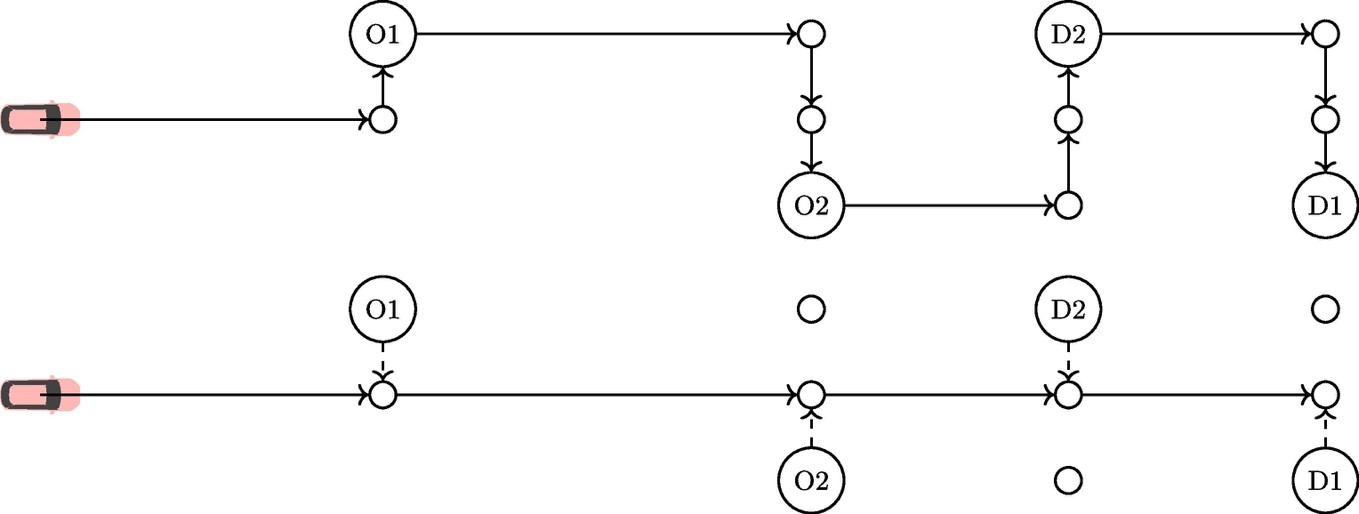A little walk can make ridesharing a lot more efficient
Ridesharing can benefit from using pick-up and drop-off points and asking users to walk a small distance. Researchers at TU Delft have analyzed this by using a real dataset of 10.000 Manhattan taxi trips. They have published their results online in Transportation Research Part C.
Uber
‘Services like Uber or Lyft are changing mobility worldwide, thanks to their ability of massive coordination between vehicles and users. Although these Mobility on-demand (MoD) systems are more efficient than traditional taxi systems, they are also most likely increasing congestion, as some trips that could be done in public transport, are now carried out in smaller and non-shared vehicles’, says lead researcher Javier Alonso-Mora of TU Delft.
Ridesharing
‘In order to take full advantage of the new technologies and reduce congestion, ridesharing systems (or Shared Mobility on-Demand, SMoD) have been proposed, in which different passengers whose routes are somewhat similar, share a vehicle. However, this trip sharing causes delay for the users, because vehicles may need to make long detours to visit all the origins and destinations that they are serving’, says Andrés Fielbaum of TU Delft, first author of the work.
‘Such a problem does of course not exist in traditional public transport, in which passengers walk towards the vehicle’s route instead of proceeding the other way around. A similar idea can also be applied to ridesharing, if there are pick-up and drop-off (PUDO) points that some users are asked to walk to and from’.
Manhattan
Alonso-Mora explains further: ‘However, optimizing the PUDO points together with the assignment between users and vehicles, can be quite challenging from an algorithmic point of view. We have now studied and simulated such a system in which users might be requested online to walk towards/from nearby pick-up/drop-off points and researched if this improves overall efficiency. We have tested this approach over a real dataset of one representative hour in Manhattan taxi trips (9970 requests).
We have showed that short average walks improve the global figures of the system meaningfully, for instance reducing the number of rejections by 80 percent. An average walk of about one minute also reduces the impact on congestion (measured as the number of Vehicles-Hour-Traveled) in more than 10 percent of cases.’ Fielbaum remarks: ‘In our experiments, less than 40% of the users are requested to walk. Walking times are short when compared with data from real-life public transport systems”.

Further research
‘There are several relevant avenues to pursue future research’, says Alonso-Mora. ‘It is possible to design methods that might yield even better results for the location of the PUDO points. Regarding the transport system itself, these shared systems still need better understanding in a number of topics, like how to determine the optimal fleet of vehicles. Finally, the relationship between shared on-demand mobility and public transport is a crucial aspect to investigate for the future of these transportation systems.’
More information
A. Fielbaum, X. Bai, and J. Alonso-Mora, "On-demand ridesharing with optimized pick-up and drop-off walking locations", in Transportation Research Part C: Emerging Technologies, May 2021
https://www.sciencedirect.com/science/article/pii/S0968090X21000887

J. (Javier) Alonso-Mora
Press officer TU Delft
